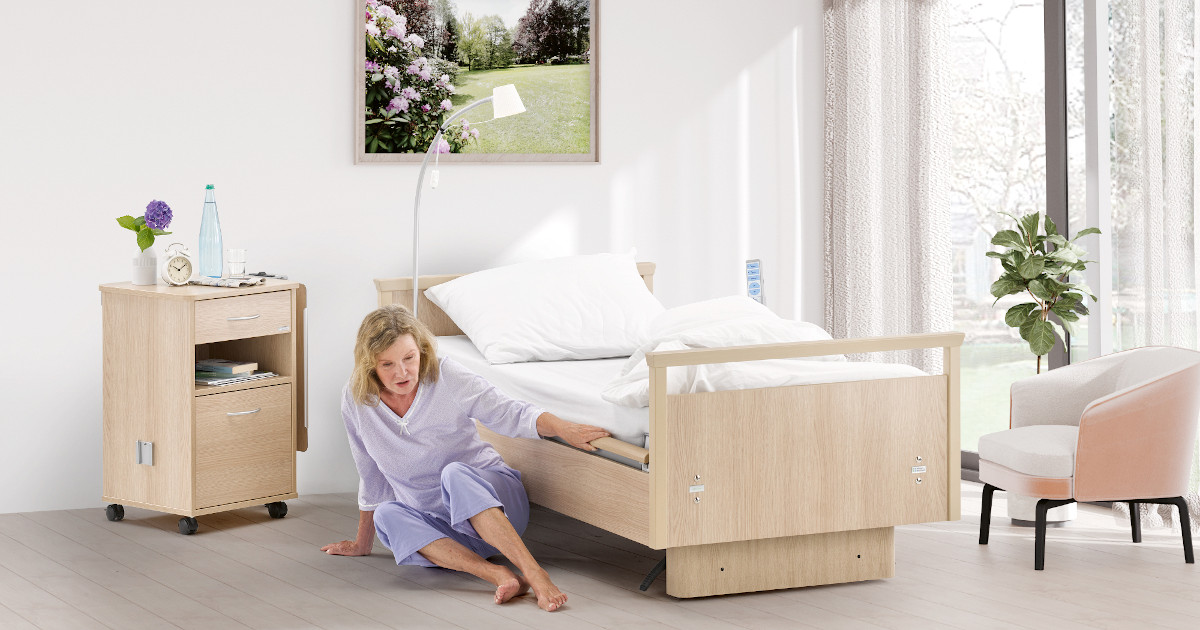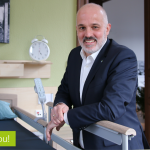According to the German Federal Ministry of Health, around 30 out of every 100 seniors over the age of 65 who live at home fall once a year. In nursing homes, the figure is as high as 50 out of 100 residents who fall and suffer the consequences every year. This is a frightening figure when you consider that these accidents could often be avoided. Fall prevention can help.
Bruises, contusions and fractures – seniors in particular are at risk of falling. „As we age, risk factors for falls increase. These include reduced muscle strength, poor vision, sleep problems and daytime fatigue, incontinence and dizziness,“ says the Center for Quality in Care online (ZQP). Together with external sources of danger, such as poor lighting, tripping hazards or incorrectly adjusted assistive devices, the number of annual falls among seniors is no wonder. „In addition, they are no longer able to assess hazards as well because their perception and attention are impaired,“ ZQP writes. Thus, outside help is needed to eliminate sources of danger and protect seniors from falls through exercise – so-called fall prevention measures.
Exercising and strengthening the body
To prevent profound injuries that can even lead to death, senior facilities and sports centers offer fall prevention exercises. „In old age, the key word is prevention. Because serious injuries like a fractured neck of the femur don’t heal well. And seniors are then often no longer able to cope with everyday life independently,“ knows Gamal Löffler, facility manager of the Marienheim senior citizens‘ home in Bad Reichenhall. Training courses are intended to provide relief from the falling itself, but also from the fear of falling. For this reason, the home offers a one-hour course twice a week. Residents train muscles and mobility for 60 minutes to maintain and strengthen them.

Gamal Löffler © Seniorenwohnen BRK
Participants also work on eye-hand coordination, so that in the event of a fall, responsiveness can prevent worse. Seniors activate their bodies from head to toe, gaining a confident body awareness through exercises and stand-up techniques. „Even guests from short-term care take part in these courses,“ Löffler is pleased to say. Of course, fun is not to be missed: The exercises are designed to be playful, and participants can train their coordination and reactions by playing balloon games, for example. The numerous exercise activities offered by the social care team at Marienheim, such as seated gymnastics, ball games or walking exercises, are also important components of fall prevention. „Those who take care of their bodies through exercises are more independent and pain-free in the long term,“ says Löffler. So fall prevention is a crucial factor in seniors‘ quality of life, he said.
But it’s not just the body that needs to be exercised; self-confidence is also important. „The goal is to take away the fear of falling,“ Löffler knows. Because fear often leads to a refusal to move. And this leads to the breakdown of the musculature, thus much more likely to falls and injuries. The training makes the residents of the Marienheim feel more confident and proud of their own progress.
Adapting rooms and eliminating hazards
Part of preventing falls is adapting living spaces. „High carpets and thresholds can be hazards. For those with dementia, even the color of the floor can make a difference,“ Löffler says. That’s why the facility offers consultations for seniors on how to best design rooms to prevent falls. Aids should also be examined more closely in this course. „If the height of a rollator is not adjusted correctly, this poses a risk of falling,“ the facility manager knows. Regular inspection of the rolling helper and practice are therefore recommended, he says. Medical supply stores offer this service for everyone. So do apps like Lindera. Through a mobility analysis via smartphone camera, this provides seniors with individually tailored movement and balance exercises, as well as tips on the correct adjustment of walking aids.
For seniors living at home, the facility manager advises, „Know your health limitations and sources of danger.“ Often, a safe home and proper footwear can already protect against falls. For seniors who have fallen more than once, Löffler recommends emergency buttons and fall-protection pants. These are filled with viscoelastic material at the side pockets and adapt to the body to cushion the impact. This does not guarantee freedom from injury, but can prevent a thigh fracture with worse consequences.


